-
 Bitcoin
Bitcoin $114400
1.32% -
 Ethereum
Ethereum $3499
2.20% -
 XRP
XRP $2.922
4.26% -
 Tether USDt
Tether USDt $0.0000
0.03% -
 BNB
BNB $752.6
1.53% -
 Solana
Solana $161.8
1.64% -
 USDC
USDC $0.9999
0.01% -
 TRON
TRON $0.3267
1.32% -
 Dogecoin
Dogecoin $0.1991
3.02% -
 Cardano
Cardano $0.7251
3.29% -
 Hyperliquid
Hyperliquid $38.32
3.36% -
 Stellar
Stellar $0.3972
7.58% -
 Sui
Sui $3.437
2.74% -
 Chainlink
Chainlink $16.29
3.65% -
 Bitcoin Cash
Bitcoin Cash $545.3
3.70% -
 Hedera
Hedera $0.2482
7.49% -
 Ethena USDe
Ethena USDe $1.001
0.03% -
 Avalanche
Avalanche $21.40
2.02% -
 Toncoin
Toncoin $3.579
1.56% -
 Litecoin
Litecoin $109.3
2.20% -
 UNUS SED LEO
UNUS SED LEO $8.951
-0.18% -
 Shiba Inu
Shiba Inu $0.00001220
2.75% -
 Polkadot
Polkadot $3.613
2.99% -
 Uniswap
Uniswap $9.173
3.78% -
 Monero
Monero $302.6
2.62% -
 Dai
Dai $0.0000
0.00% -
 Bitget Token
Bitget Token $4.320
1.52% -
 Pepe
Pepe $0.00001048
3.40% -
 Cronos
Cronos $0.1314
4.33% -
 Aave
Aave $259.4
3.54%
What is a wallet? How does a blockchain wallet store assets?
A blockchain wallet stores private and public keys to manage digital assets on the blockchain, not the cryptocurrencies themselves, ensuring secure transactions and access.
Apr 27, 2025 at 12:42 pm
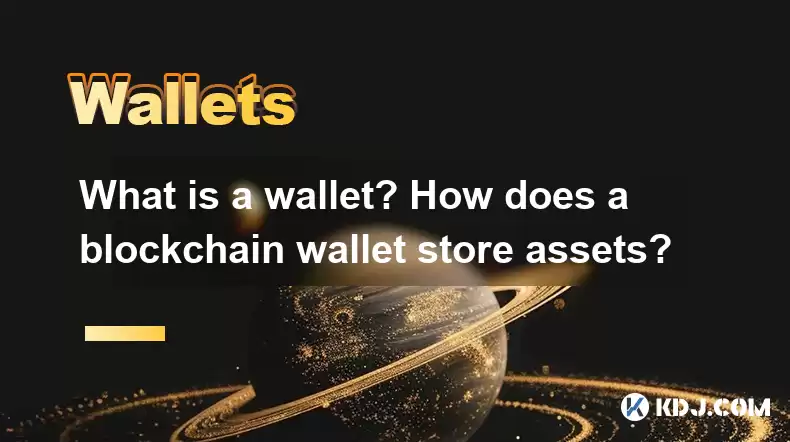
A wallet in the cryptocurrency world is a software program that stores the private and public keys necessary to interact with various blockchains and manage your digital assets. Unlike traditional wallets that hold physical cash, a blockchain wallet does not store the actual cryptocurrencies. Instead, it manages the keys that grant you access to your assets on the blockchain.
Types of Blockchain Wallets
There are several types of blockchain wallets, each with its own set of features and security levels. Software wallets are applications that you download and install on your computer or mobile device. These are convenient for everyday use but may be vulnerable to malware and hacking. Hardware wallets, on the other hand, are physical devices that store your keys offline, offering a higher level of security. Paper wallets involve printing out your keys on a piece of paper, which is a simple but less convenient method. Web wallets are hosted online by third-party services, providing ease of access but with the risk of the service being hacked.
How a Blockchain Wallet Stores Assets
A blockchain wallet does not store your cryptocurrencies in the traditional sense. Instead, it stores the private and public keys that allow you to access and manage your assets on the blockchain. When you create a wallet, it generates a unique pair of keys:
- Public Key: This is used to receive cryptocurrencies. It can be shared with others to receive payments.
- Private Key: This is used to sign transactions and prove ownership of the assets. It must be kept secret and secure.
When you send or receive cryptocurrencies, you are essentially updating the blockchain ledger with new transaction data. The wallet software uses your private key to sign these transactions, ensuring that only you can authorize the movement of your assets.
The Role of the Blockchain in Asset Storage
The blockchain itself is a decentralized ledger that records all transactions across a network of computers. Each block in the chain contains a list of transactions, and once a block is added to the chain, the transactions it contains are considered immutable and permanent. Your assets are stored on the blockchain, and your wallet provides you with the tools to interact with these assets. When you check your balance in your wallet, it is querying the blockchain to see how many assets are associated with your public key.
Security Measures in Blockchain Wallets
Security is a critical aspect of blockchain wallets. Here are some common security measures:
- Encryption: Many wallets encrypt your private keys, adding an extra layer of protection.
- Backup and Recovery: Wallets often provide seed phrases or mnemonic phrases that can be used to recover your wallet if you lose access to your device.
- Two-Factor Authentication (2FA): This adds an additional step to the login process, making it harder for unauthorized users to access your wallet.
- Multi-Signature Wallets: These require multiple private keys to authorize a transaction, increasing security for shared or organizational funds.
Using a Blockchain Wallet
To use a blockchain wallet, you typically follow these steps:
- Choose a Wallet: Decide on the type of wallet that suits your needs, considering factors like security, ease of use, and supported cryptocurrencies.
- Download and Install: If you choose a software wallet, download it from the official website and follow the installation instructions.
- Create a New Wallet: Follow the wallet's prompts to create a new wallet. This will generate your public and private keys.
- Secure Your Private Key: Make sure to store your private key securely. For software wallets, this might involve writing down your seed phrase and storing it in a safe place.
- Receive and Send Cryptocurrencies: Use your public key to receive cryptocurrencies. To send, enter the recipient's public key and the amount you wish to send, then sign the transaction with your private key.
Interacting with the Blockchain
When you send cryptocurrencies from your wallet, the process involves several steps:
- Create a Transaction: You specify the recipient's public key and the amount of cryptocurrency to send.
- Sign the Transaction: Your wallet uses your private key to sign the transaction, proving that you authorize the transfer.
- Broadcast the Transaction: The signed transaction is broadcast to the blockchain network.
- Verification and Confirmation: Miners or validators on the network verify the transaction and include it in a block. Once the block is added to the blockchain, the transaction is considered confirmed.
Frequently Asked Questions
Q: Can I use one wallet for multiple cryptocurrencies?
A: Yes, many modern wallets support multiple cryptocurrencies. These are often referred to as multi-currency wallets. When choosing a wallet, make sure it supports all the cryptocurrencies you intend to use.
Q: What happens if I lose my private key?
A: Losing your private key can result in permanent loss of access to your cryptocurrencies. This is why it's crucial to back up your private key or seed phrase securely. Some wallets offer recovery options using the seed phrase, but if you lose both, your assets may be irretrievable.
Q: Are blockchain wallets anonymous?
A: Blockchain wallets can provide a level of anonymity, but they are not completely anonymous. Transactions are recorded on the public ledger, and while the keys are pseudonymous, advanced analysis can sometimes trace transactions back to individuals. For enhanced privacy, consider using privacy-focused cryptocurrencies or mixing services.
Q: How do I know if my wallet is secure?
A: To ensure your wallet is secure, choose reputable wallet providers, enable all available security features like 2FA, regularly update your wallet software, and never share your private key or seed phrase with anyone. Additionally, consider using hardware wallets for storing large amounts of cryptocurrencies.
Disclaimer:info@kdj.com
The information provided is not trading advice. kdj.com does not assume any responsibility for any investments made based on the information provided in this article. Cryptocurrencies are highly volatile and it is highly recommended that you invest with caution after thorough research!
If you believe that the content used on this website infringes your copyright, please contact us immediately (info@kdj.com) and we will delete it promptly.
- Cryptocurrency, Altcoins, and Profit Potential: Navigating the Wild West
- 2025-08-04 14:50:11
- Blue Gold & Crypto: Investing Disruption in Precious Metals
- 2025-08-04 14:30:11
- Japan, Metaplanet, and Bitcoin Acquisition: A New Era of Corporate Treasury?
- 2025-08-04 14:30:11
- Coinbase's Buy Rating & Bitcoin's Bold Future: A Canaccord Genuity Perspective
- 2025-08-04 14:50:11
- Coinbase's Buy Rating Maintained by Rosenblatt Securities: A Deep Dive
- 2025-08-04 14:55:11
- Cryptos, Strategic Choices, High Returns: Navigating the Meme Coin Mania
- 2025-08-04 14:55:11
Related knowledge
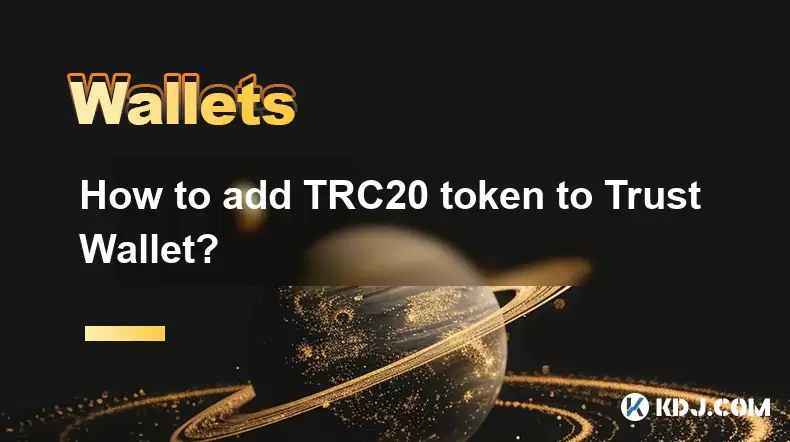
How to add TRC20 token to Trust Wallet?
Aug 04,2025 at 11:35am
Understanding TRC20 and Trust Wallet CompatibilityTrust Wallet is a widely used cryptocurrency wallet that supports multiple blockchain networks, incl...
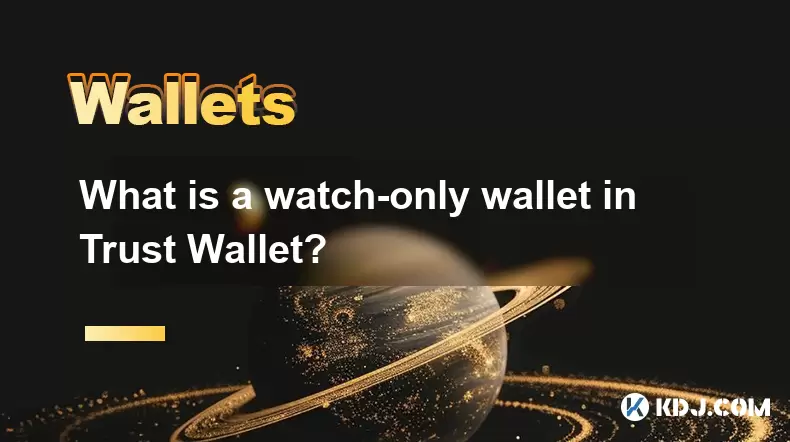
What is a watch-only wallet in Trust Wallet?
Aug 02,2025 at 03:36am
Understanding the Concept of a Watch-Only WalletA watch-only wallet in Trust Wallet allows users to monitor a cryptocurrency address without having ac...
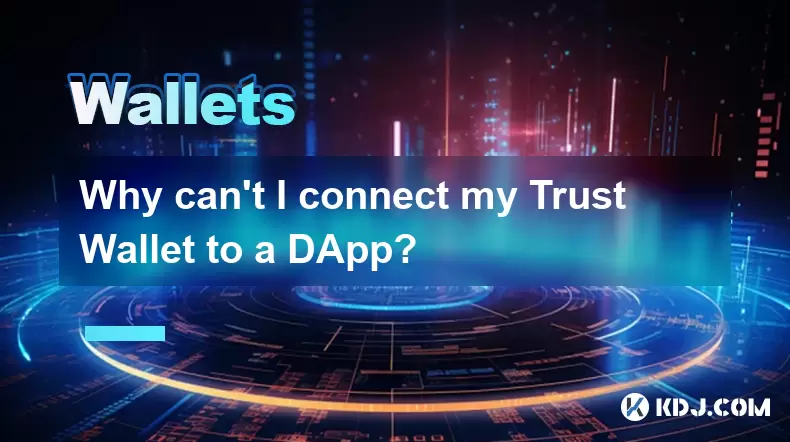
Why can't I connect my Trust Wallet to a DApp?
Aug 04,2025 at 12:00pm
Understanding DApp Connectivity and Trust WalletConnecting your Trust Wallet to a decentralized application (DApp) is a common process in the cryptocu...
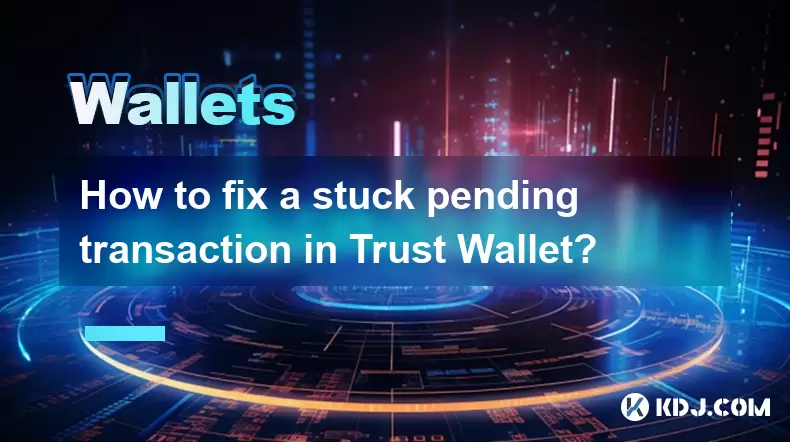
How to fix a stuck pending transaction in Trust Wallet?
Aug 03,2025 at 06:14am
Understanding Why Transactions Get Stuck in Trust WalletWhen using Trust Wallet, users may occasionally encounter a pending transaction that appears t...
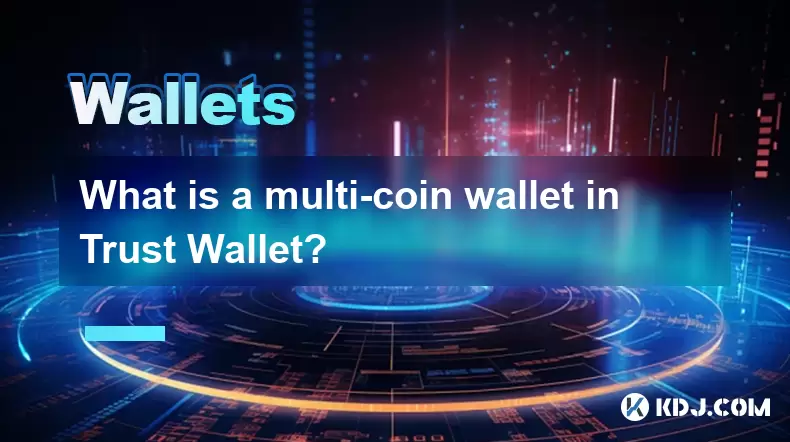
What is a multi-coin wallet in Trust Wallet?
Aug 03,2025 at 04:43am
Understanding Multi-Coin Wallets in Trust WalletA multi-coin wallet in Trust Wallet refers to a digital wallet that supports multiple cryptocurrencies...
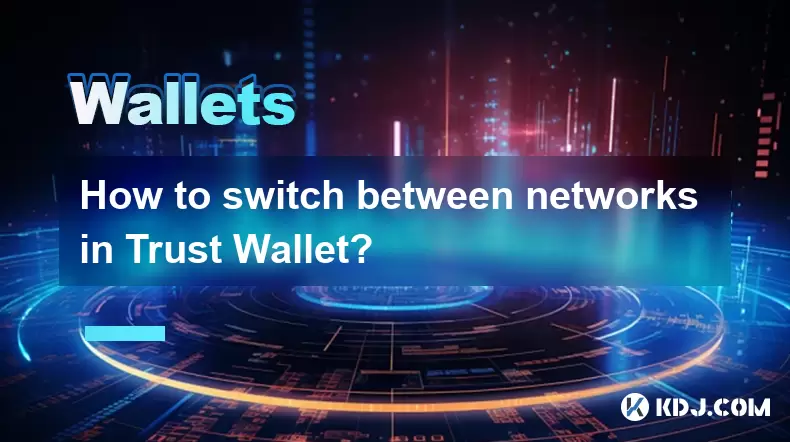
How to switch between networks in Trust Wallet?
Aug 02,2025 at 12:36pm
Understanding Network Switching in Trust WalletSwitching between networks in Trust Wallet allows users to manage assets across different blockchains s...

How to add TRC20 token to Trust Wallet?
Aug 04,2025 at 11:35am
Understanding TRC20 and Trust Wallet CompatibilityTrust Wallet is a widely used cryptocurrency wallet that supports multiple blockchain networks, incl...

What is a watch-only wallet in Trust Wallet?
Aug 02,2025 at 03:36am
Understanding the Concept of a Watch-Only WalletA watch-only wallet in Trust Wallet allows users to monitor a cryptocurrency address without having ac...

Why can't I connect my Trust Wallet to a DApp?
Aug 04,2025 at 12:00pm
Understanding DApp Connectivity and Trust WalletConnecting your Trust Wallet to a decentralized application (DApp) is a common process in the cryptocu...

How to fix a stuck pending transaction in Trust Wallet?
Aug 03,2025 at 06:14am
Understanding Why Transactions Get Stuck in Trust WalletWhen using Trust Wallet, users may occasionally encounter a pending transaction that appears t...

What is a multi-coin wallet in Trust Wallet?
Aug 03,2025 at 04:43am
Understanding Multi-Coin Wallets in Trust WalletA multi-coin wallet in Trust Wallet refers to a digital wallet that supports multiple cryptocurrencies...

How to switch between networks in Trust Wallet?
Aug 02,2025 at 12:36pm
Understanding Network Switching in Trust WalletSwitching between networks in Trust Wallet allows users to manage assets across different blockchains s...
See all articles

























































































